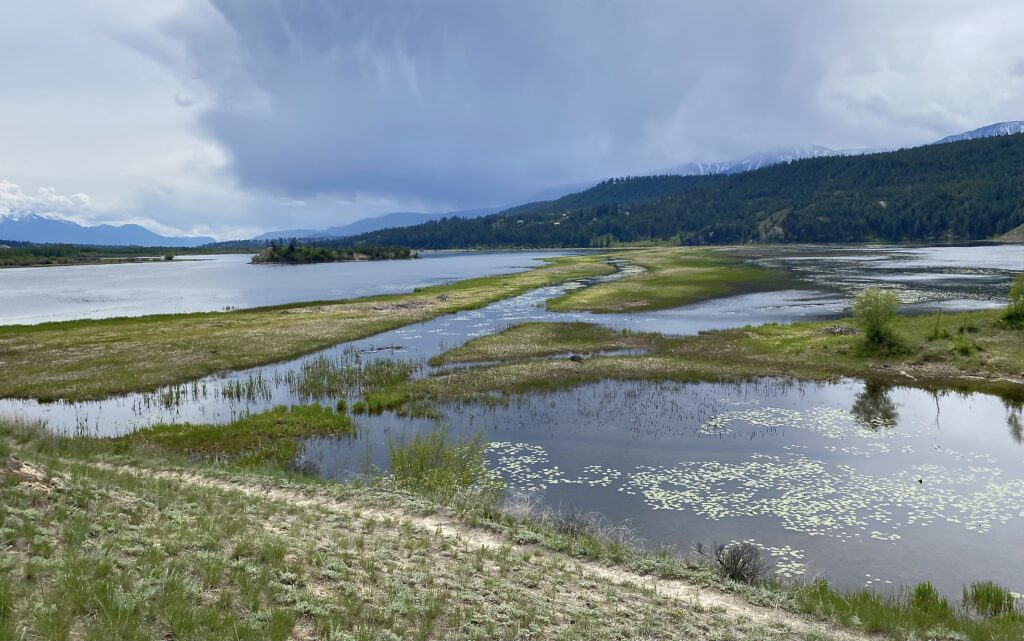

Learning Objectives
This blog post seeks to equip you with a fundamental comprehension of resilience by:
- Outlining components that form the basis of adaptability, for example, regular simulations and strategic planning;
- Considering how persistence transcends simple experience, education, or training, and how it can be nurtured as a vital aspect of your daily life;
- Emphasising the role of resilience-enhancing practices in bolstering your physical, emotional, social, and spiritual health before, during, and after crises;
- Grasping the importance of ongoing education and training in developing adaptiveness, improving decision-making capabilities, and effectively managing emergencies;
- Offering practical suggestions for creating a basic resiliency toolkit. For instance, creating a go-bag, which could contain critical items such as flashlights, first aid kits, non-perishable food, and essential documents;
- Encouraging through planning and ongoing efforts to build workability that extends beyond merely possessing necessary supplies; and,
- Identifying practical touchstones to strengthen your resilience in the face of adversity.
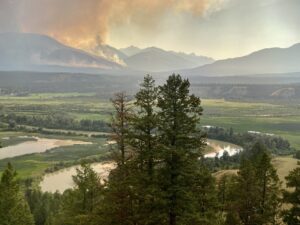
Topics Covered
This blog post explores a theoretical and practical framework for resilience, encompassing the following elements:

The Nature of Resiliency Elements and Long-Term Solutions
Resiliency often demands application and consistency to create future strategies to mitigate disasters. Your resiliency framework would include fundamental components of disaster management. Planning could include emergency preparedness plans, social support systems, and building adaptive skills.
The Relationship Between Resiliency and Disaster Management
Resiliency encompasses more than just experience, education, or training, as well as surviving past disasters; it can also be cultivated as a way of life.
Interconnections Between Resilience, Disasters, and Health Issues
Engaging in resilience-building practices can assist you in navigating the physical, emotional, social, and spiritual dimensions both prior to, during, and following disasters.
Learning About Disaster Preparedness and Resilience
Cultivating resilience is a protracted learning journey that calls for continuous effort and dedication. There are benefits to education and training services including in ways to facilitate resilience. Moreover, skill-building can inform decision-making, for example, during crises.
A Resiliency Toolkit is Not an Instant Solution
Your resiliency toolkit can prove invaluable help in managing disaster scenarios. Your family and extended support networks could gain from rudimentary resiliency planning to lessen the repercussions of disasters, pandemics, or other large-scale emergencies.
Civilisations Arise, Bringing Forth New Ages.
Human civilisations did not come into existence overnight, and the mountains might be urging you to contribute to long-lasting change and well-being across generations. In addition, there may be days when you feel like you are living your best life, basking in the sunshine at the beach, but other days when you may feel like you are in a deep chasm. However, remember to take deep, slow breaths and make use of the resilience toolkit.

What constitutes a disaster and its consequences?
A disaster is an unforeseen event that results in significant harm, damage, or destruction. These events can be caused by natural, technological, or human-related factors, leading to physical damage, injuries, and even fatalities. A major disaster can exceed a community’s ability to respond effectively, requiring assistance from municipal, state, or national authorities. Despite preparation and planning, unexpected challenges may arise, such as transportation disruptions, power outages, lack of communication services, limited access to medical care, supplies, and water.
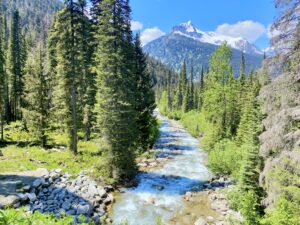
What kinds of disasters can occur?
- Avalanches
- Cyclones
- Earthquakes
- Floods
- Hazardous waste incidents
- Heatwaves
- Hurricanes
- Landslides
- Mudslides
- Pandemics – See The Plague
- Tornadoes
- Tsunamis
- Uncontrolled fires
- Volcanic eruptions
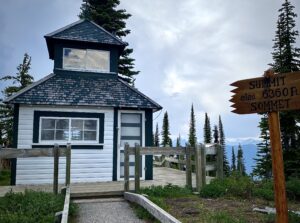
Fires, earthquakes and cyclones can be terrifying experiences. British Columbia, a Canadian province, and Vanuatu, an island nation border the Pacific and experience natural disasters. Disasters are not restricted by borders and can be far-reaching, affecting psychological, social, economic, and ecological aspects.
Cyclone Ivy Swept Vanuatu in 2004
Vanuatu in 2004 was severely impacted by Cyclone Ivy, which caused significant destruction (United Nations Office for the Coordination of Humanitarian Affairs, 2004). In particular, Cyclone Ivy struck in 2004, bringing violent winds and heavy rains to the islands, resulting in widespread damage to infrastructure and homes. This storm left people displaced and caused serious disruptions to daily life.
VANUATA AND THE RING OF FIRE
Vanuatu is located within the Ring of Fire, an area known for its high level of volcanic and seismic activity (Steedman, 2024). Earthquakes in this region are repeated and can often lead to further challenges, especially after substantive storms, and the land is already weakened by cyclonic events. These disasters not only caused immediate physical damage but also have long-term socio-economic consequences for Vanuatu’s people. This nation relies heavily relies on agriculture and tourism. Recovery from such events is often gradual, calling for a significant international aid and support for rebuilding efforts. This nation received assistance from Australia, France, and New Zealand among others (United Nations Office for the Coordination of Humanitarian Affairs, 2004).
Vanuatu Disasters and the Long-Road to Recovery in 2024
Vanuatu, is located in the Pacific Ring of Fire and experiences frequent disasters, and significant challenges with disaster preparedness and recovery. Moreover, Vanuatu is grappling with both political and economic instability. Welwel and Hodge (2025) report that Vanuatu regularly faces disasters, including earthquakes, cyclones, and unexpected tsunamis. The region is also home to more than nine active volcanoes.
Cyclones and an Earthquake Strike Vanuatu Again
In December, 2024, a series of catastrophic events transpired. These calamities involved three cyclones and a 7.3 magnitude earthquake severely affected Port Vila, resulting in 14 fatalities and adversely impacting 80,000 residents (Welwel & Hodge, 2025).
The Chinese government had previously invested $31 million in constructing a presidential palace in the capital, Port Vila. The earthquake caused significant damage to essential infrastructure, including healthcare facilities, bridges, and dams. Older buildings, as well as newer constructions that may not have adhered to building codes, suffered the most extensive damage.
Vanuatu’s vulnerability to disasters has left the city resembling a ghost town. Buildings appear to have failed to meet safety regulations, prompting the Chinese government to offer assistance in repairing five key projects that it had previously funded as aid to Vanuatu.
A staggering 95% of Vanuatu’s population lacks insurance, and the country is burdened with substantial debt. Additionally, this nation attracts minimal international investment and is facing inflationary pressures. The Vanuatu people generally continue to be staunch in the face of adversity (Welwel & Hodge, 2025).
Foreign Aid to Vanuatu
Both Australia and New Zealand provide aid and assistance to Vanuatu. These countries, and the World Bank Group, have been instrumental in supporting Vanuatu’s recovery efforts. In addition to ongoing aid from Australia, New Zealand, and China, the World Bank Group’s pledge of $30 million further optimises Vanuatu’s capacity to meet reconstruction needs and plan for future emergency-related costs.
The commitment from international sources is crucial for Vanuatu’s resilience and long-term development. The aid can help to rebuild infrastructure, enhance disaster response systems, and begin to address the broader challenges posed by climate change and environmental hazards.
Disasters ranging from uncontrolled fires, to hurricanes and pandemics have tested human and planetary resilience. Disasters impact human lives and activities (Wang, et al., 2022). Lives are intricately connected in a cosmic web that sends emotional shock waves across nations. Calling for such standards as the Sendai Framework for Disaster Risk Reduction 2015-2030 to reduce the risks of disaster, including for rural locations,
Challenges in Rural and Remote Locations
According to Garcia (2024), rural areas often face challenges such as being isolated geographically. Moreover, rural and romote locations might have limited transportation options, and regularly deal with small budgets, all while their struggles often go unnoticed by the media. However, cities are not impenetrable and are often dependent on plugging in to technological systems. Here lies a dilemma for networks are vulnerable to cumulative impacts from the environment and hackers (Samarakkody, et al., 2023). These kinds of challenges call for interdisciplinary city and rural planning and policies.
Global Warming
Planetary warming has ushered in climate-related hazards. Unplanned and uneven demographic development, maladaptive land use patterns, and the degradation of eco-systems, have exacerbated climate challenges (Marzi, et al., 2019; Tierney, 2014). These challenges have been exacerbated by speculative financial and real property practices. Thus, in such circumstances, regions are prone to catastrophic flooding events (Gov.UK).

Resiliency and Disaster Management
Disaster management in Canada is primarily overseen by municipal and provincial governments, with federal resources also playing a role (Paas-Lang & Cullen, 2023). Discrepancies exist in the provision of disaster management services, leading to the involvement of the military in addressing deficiencies (Paas-Lang & Cullen, 2023). Canada often relies on its military to compensate for shortages in disaster-linked human resources, which is straining its capabilities. Power grids may experience instability due to usage, and managing disasters can pose significant challenges, especially in the absence of dependable power sources.
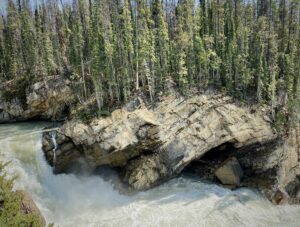
Freezing Temperatures
According to Millman and Secco (2024), some climate experts have suggested that global warming could lead to a sudden and significant drop in temperature. Dawson (2024), pointed out that specific regions in British Columbia experienced extreme frigid temperatures on January 12. These temperatures reached as low as -45 degrees Celsius (roughly -49 degrees Fahrenheit). In response to this, the Department of Environment Canada had to release roughly twenty-four extreme cold weather alerts. Additionally, residents of other Canadian provinces such as Alberta, Saskatchewan, the Yukon, and Manitoba, could experience severe cold weather. The adverse effects of such extreme cold conditions are likely to impact older persons, children, and individuals with pre-existing health conditions the most. However, workers, skiers, travellers, city dwellers, and others also had to confront the challenges posed by the extreme cold temperatures (Pawson, 2024).
Millman and Secco (2024) suggested that Texas could experience more instances of wind chill and that the central and eastern parts of the United States may see substantial snowfall.
A Resiliency Toolkit and Adaptive Risk Management
Evaluating disaster resilience is a touchstone of adaptive risk management and drives the building of a meaningful index (Marzi, et al., 2019). According to Samarakkody, et al. (2023), implementing measures such as environmental, financial, transportation, and land use improvements can offer significant advantages.
Making a Go-Bag
Please ensure that any expired medications are replaced in your go-bag. Furthermore, it is prudent to carry cash and copies of important documents, including passports, property ownership and insurance papers, as well as banking information. Additionally, verify that your vehicle is in good condition and fully fuelled.
Your go-bag an be an essential preparation tool. It is advisable to incorporate essential items such as the following.
- flashlights
- candles
- matches
- survival blankets
- suitable clothing
- prescribed medications
- a first aid kit
- water
- non-perishable foods
- toiletries
- batteries
- a generator
- a phone charger
- an emergency radio
- a whistle
- a designated meeting location for family and friends, and maps (Government of British Columbia, 2024).
People impacted by unforeseen calamities like fires may not exhibit physical harm, yet they could be experiencing mental and emotional distress. This can be especially so when they have lost loved ones or faced personal risks and struggle with access to health resources.
Resiliency, Disasters, and Health Issues
People who have experienced disasters may encounter a range of ongoing health challenges. These difficulties, including sadness, complicated grief, post-traumatic stress disorder, substance use disorders, suicidal thoughts, and anxiety. These individuals could also engage in unhealthy coping mechanisms such as increased smoking, alcohol misuse, and experience insomnia (Bryant, et al., 2009).
Resiliency and Three Groupings of Health Services Training
Training health professionals to respond to disasters often includes evaluation, problem-solving, and building solutions to address challenges. This training should also involve breaking down problems into manageable parts to establish tangible goals. Additionally, professionals should be trained to make appropriate adjustments and practice reality-based responses to catastrophes (Bryant, et al, 2009).
International standards should be followed in the aftermath of disasters, and government services need to reflect these standards in their disaster recovery schemes. To address the mental health needs of individuals affected by disasters, Bryant, el. al. (2009) proposed three levels of health service training.
Certain people may encounter health problems linked to disasters including drowning, and the cognitive and emotional impacts may manifest later in life. This is often contingent upon the specific circumstances and demands they face.
Level One Minor Mental Health Problems and resiliency
The first level, aimed at people generally who have experienced uncontrolled fire, focuses on addressing physical and minor cognitive injuries. People in this grouping could benefit from assistance with insurance paperwork, and coordinating the reconstruction of homes, schools, and neighbourhoods. The first level of training involves providing physical and brief cognitive injury treatment and arranging for rebuilding to take place.
Level Two Mild to Moderate Mental Health Support and resiliency
Most people who are impacted by drowning or uncontrolled fires do not experience life-long cognitive and emotional issues. On the other hand, there are people who may need mental health services due to experiencing multiple difficulties. These challenges include the loss of loved ones, friends, or acquaintances, or having put their own lives in danger. They might experience chronic health challenges for the first months after a disaster, and then these could diminish over time.
Level Three Could Involve a Diagnosable Mental Health Disorder and resiliency
People who require Level Three support may experience challenges ranging from depression to complicated grief, post-traumatic stress disorder, addictions to substances, and suicidal ideation. They could smoke more, misuse alcohol, and experience insomnia
After natural disasters like floods and uncontrollable fires, a small percentage of survivors may suffer from various injuries. These injuries include post-traumatic stress disorder, depression, and other difficulties. Bryant, et al, (2009) argued that these people could require Level Three support.
A Resiliency Toolkit and Disaster Training
Bryant, et al. (2009), advocate for training in therapeutic techniques that can be adapted to various settings. These techniques could and do involve a diverse range of disciplines, rather than being restricted to a specific physical location. Other components of training include public education, communication, and referral. It’s also important to recognise the advantages of developing routines, bolstering existing social networks, and incorporating positive relaxation techniques into stressful circumstances. It is essential to train healthcare workers to effectively handle the cognitive and emotional difficulties that may arise after disasters. The identification of health needs, and the provision of appropriate support at different levels is needed.
A Resiliency Toolkit and Disaster Response
According to Bryant, et al. (2009), preparing health professionals for disaster response should involve assessment and problem-solving techniques for constructing solutions. During this process, problems are often divided into manageable pieces to create concrete objectives. In addition, health professionals could receive training on how to adapt appropriately and practice reality-based disaster response techniques.
A Resiliency Toolkit and Uncontrolled Fires
The destructive impact of uncontrolled fires is devastating for both humans and the environment. Following the occurrence of these calamities, individuals often have to reconstruct their lives. They have the potential to take lessons from a nation like Canada, which has been profoundly influenced by fire. However, amid the destruction, there are signs of life as some seeds manage to sprout after a fire.
A Resiliency Toolkit and Lessons Learned Across Borders
Governments, by studying the behaviours and acquiring insights from countries such as Canada, Vanuatu, The United Kingdom, and other nations, can be alerted in advance, of disaster mitigation practices. Grasping the disaster mitigation practices of different nations can provide valuable insights into how states can better prepare for, respond to, and recover from disasters. By taking an observer’s voyeuristic stance, we can discover and implement innovative methods that surpass our typical social and genetic tendencies (Csikszentmihalyi, 1997). This in turn helps us to effectively tackle the challenges posed by novel and anticipated disasters.
Some people may have “late-onset” mental health issues, meaning they develop issues years after the disaster. The section below could prompt you to think about what your resiliency toolbox might look like.

A Resiliency Toolkit
Participate in Improving Public Safety. | Seek Out Help | Improve Your Balanced Lifestyle | Enhance your psychological and cognitive coping skills. |
Wash hands regularly for at least 20 seconds. | You can do it – be proactive. If you feel unhappy, remember to find someone with whom to talk. | For example, try eating good mood foods, i.e. fatty fish, oats, leafy green vegetables, brazil nuts, bananas, berries, and dark chocolate. Eventually, these foods can improve your wellbeing. | Also, test out tools that work for you, helping you regulate your moods and sense of self. |
Exercise physical distancing. | You could contact a supervisor, a counsellor, a friend and talk about what you are experiencing. For example, if you feel overwhelmed, anxious, sad, angry, or at an emotional impasse. | How well are you hydrating each day? You could drink about 2-3 liters or 11 -15 cups of water daily. The amount of water you should drink could be adjusted, for instance, to meet your age, activities, the climate, and your broader circumstances. | Furthermore, think optimistically and believe in your capacity to manage routine and novel situations. However, remember that you are human and often imperfect. |
| Turn a negative into a positive by debriefing. Personal troubles may be public issues. | No person is an island. However, develop positive relationships and remember the Desiderata indicated, “Avoid loud and aggressive persons; they are vexatious to the spirit” (Ehrmann, 1995). | Moreover, if in doubt, breathe and think about the here and now with all of its promises and limitations. | |
Be compassionate and empathetic. Journey a mile in another person’s shoes. | Think about connecting with family, friends, and interest groups online or over the telephone. | Meanwhile, keep the dialogue open and positive as much as possible. | Furthermore, choose to be responsible and to develop harmony in your life. |
Lend a helping hand! | Finally, you are not alone! | Eventually, venture on the undiscovered journey of self and your relationships to enhance your home/work/life balance. | In the blockbuster, the “Sound of Music” Julie Andrews sang, “Oh, I must stop these doubts, All these worries. If I don’t I just know I’ll turn back! I must dream of the things I am seeking. I am seeking the courage I lack” (Rodgers Hammerstein Organization, 2024). Courage may be elusive, and it can be learned and gained through experience. |
The Resiliency Toolbox includes some everyday tools and questions, and these appear above.
A Resiliency Toolkit and Customised Support
Here, we care about you and your family and provide support services to fit your situation. Moreover, we aim to see you succeed with us, almost no matter what! Access opportunities to enhancing resilience and personal as well as societal coping capacities.

In closing
This blog entry offered an overview of the subsequent topics:
- Foundational elements of resiliency;
- The nature of resiliency as a long-term solution;
- The relationship between resiliency and disaster management;
- The interconnection of resiliency, disasters, and health concerns;
- Training in resiliency and disaster preparedness;
- Resiliency toolkit overview; and,
- How to contact us.

Optimising personal and social resilience, or happiness, doesn’t mean you will never experience adversity, but you may have a bridge as an anchor point to face challenges.
References
B-J
Bryant, R., Creamer, M, Forbes, D., Raphael, B. Gordon, R. and Coghlan, A. (2009). Scoping Document for Mental Health Response to Victorian Bushfires.
Csikszentmihalyi, M. (1997). Creativity the psychology of discovery and invention. ProQuest. ABI/Inform Collection.
Dawson, J. (2007, Winter). From Eco-Kooks to Eco-Consultants. Communities, 137, 48-51. ProQuest.
Ehrmann, M. (1995). Desiderata: A Poem for a Way of Life. Museum of Cambridge.
https://www.museumofcambridge.org.uk/wp-content/uploads/2020/07/Desiderata-DC-edit.pdf
Editor (2024). Deepsea eruption expected off B.C. after intense quake activity. CBC. Canadian Broadcasting Corporation.
Garcia, I. (2024, June). Beyond Urban-Centered Responses: Overcoming Challenges to Build Disaster Resilience and Long-Term Sustainability in Rural Areas. Sustainability, 16 (11).
http://dx.doi.org/10.3390/su16114373
Government of British Columbia (2024, August 12). Build an emergency kit and grab-and-go bag.
Government of the United Kingdom (2025). Flood alerts and warnings. Gov.UK.
https://check-for-flooding.service.gov.uk/alerts-and-warnings
Hurdalek, G., Lindsay, H, & Crouse, R. (1965). The Sound of Music. IMD Pro.
https://www.imdb.com/title/tt0059742/
Jacebo, J. , Kennan, J.P. & Weinstein, J. (2022). Flocks of sheep are the firefighting solution we never knew we needed. ABC. Australian Broadcasting Corporation.
https://abcnews.go.com/US/flocks-sheep-firefighting-solution-knew-needed/story?id=80800627
M-P
Marzi, S., Musial, J., Essenfelder, A.H., Giove, S. & Fekete, A. (2019, September). Constructing a comprehensive disaster resilience index: The case of Italy. PLoS ONE, 14 (9).
http://dx.doi.org/10.1371/journal.pone.0221585
Millman, O. & Secco, L. (2024, January 11). ‘US weather. ‘Brutal’ Arctic blast expected to bring frigid temperatures to North America. The Guardian.
https://www.theguardian.com/us-news/2024/jan/11/arctic-blast-us-weather-freezing
Nay, I.P. (2024). New research highlights where ‘The Big One’ earthquake could hit. CBC. Canadian Broadcasting Corporation.
https://www.cbc.ca/news/canada/british-columbia/cascadia-subduction-zone-imaging-1.7235949
Paas-Lang, C. & Cullen, C. (2023). U.S., Canada open to a ‘NORAD-like’ model of joint disaster response: Blair. Canadian Broadcasting Corporation News.
https://www.cbc.ca/news/politics/canada-us-disaster-response-cooperation-1.6871059
Pawson, C. (2024, January 12). Temperatures plummet across B.C., with province in the grip of Arctic air. CBC. Canadian Broadcasting Corporation.
https://www.cbc.ca/news/canada/british-columbia/cold-weather-freezing-temperatures-b-c-january-12-2024-1.7081712
The Rodgers & Hammerstein Organization (2024). Something Good. The Sound of Music.
https://rodgersandhammerstein.com/song/the-sound-of-music/something-good/
S-W
Samarakkody, A., Amaratunga, D., & Haigh, R. (2023, August). Technological Innovations for Enhancing Disaster Resilience in Smart Cities: A Comprehensive Urban Scholar’s Analysis. Sustainability, 15 (15).
http://dx.doi.org/10.3390/su151512036
Sendai Framework for Disaster Risk Reduction 2015-2030
https://sustainabledevelopment.un.org/frameworks/sendaiframework
Steedman, E. (2024, December 17). Why earthquakes are more common in places such as Vanuatu. ABC.
https://www.abc.net.au/news/2024-12-17/why-earthquakes-are-common-in-vanuatu/104738148
Tierney, K. (2014). The Social Roots of Risk: Producing Disasters, Promoting Resilience. Stanford University.
https://www-sup.stanford.edu/books/title/?id=18573
United Nations Office for the Coordination of Humanitarian Affairs (2004). Vanuatu – Tropical Cyclone Ivy OCHA Situation Report No. 3.
Wang, W., Foutz, N.Z, & Gas, G. (2022). Huddling with families after disaster: Human resilience and social disparity. PLoS One, 17 (9).
http://dx.doi.org/10.1371/journal.pone.0273307
Welwel, L. & Hodge, H. (2025, March 20). From paradise to peril. ABC. Australian Broadcasting Corporation.
World Bank Group (2025, January 15). In Wake of December Earthquake, World Bank Provides $30 Million Grant to Bolster Vanuatu’s Recovery and Resilience.


